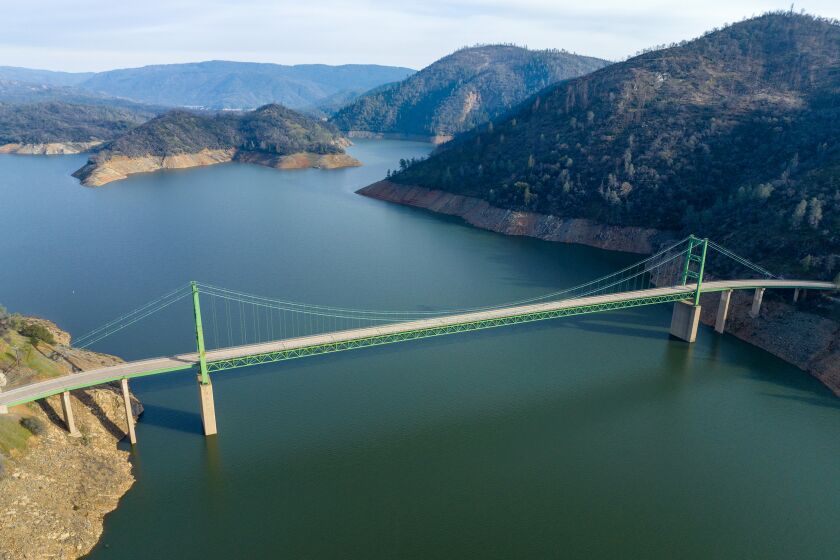
After a series of atmospheric river storms that hit California in December and January, the state’s two largest reservoirs are looking a lot fuller than they were a few months ago. Before and after satellite photos from NASA Earth Observatory show that those early winter deluges made all the difference.
The photos don’t account for several February storms, including the weekend’s epic snowfall, which are also likely to help move the needle.
Lake Shasta, pictured above, is California’s largest reservoir. On Nov. 19, when the first shot was taken, it was at 31% capacity, according to the California Department of Water Resources.
On Jan. 29, when the “after” photo was taken, Shasta was up to 56%. And data updated Monday from the California Department of Water Resources tracker shows the reservoir has risen to 60%, still below its historic level for February — 72% — but significantly higher than it was.
Lake Oroville, an important part of California’s water supply, also benefited from early winter storms, as satellite images confirm.
On November 19, when the first image was taken, the reservoir was at 28% of its capacity, well below the historical average.
On Jan. 30, Oroville was at 64%, and Monday’s updated numbers showed it was 72% — well above the historic average for February, 63%.
Although reservoir levels have improved significantly, California is still experiencing severe drought. Experts told The Times it would take more than a series of storms to make up for years of water shortages.
Groundwater has been depleted and was still at dangerously low levels, including in the Central Valley. In Los Angeles, rainwater harvesting has not lived up to its promises. The Colorado River, an important source of water for Southern California, is in crisis.
However, the storms made a difference. While water systems are complicated and analysis is pending, Department of Water Resources spokesman Margaret Mohr said Thursday’s update of the U.S. Drought Monitor showed the state remained completely out of exceptional and extreme drought, while 41% of the state had three months fell under those classifications. prior.
The portion of the state experiencing severe drought or worse dropped from 85% to 33% in those three months.
This story originally appeared in the Los Angeles Times.

